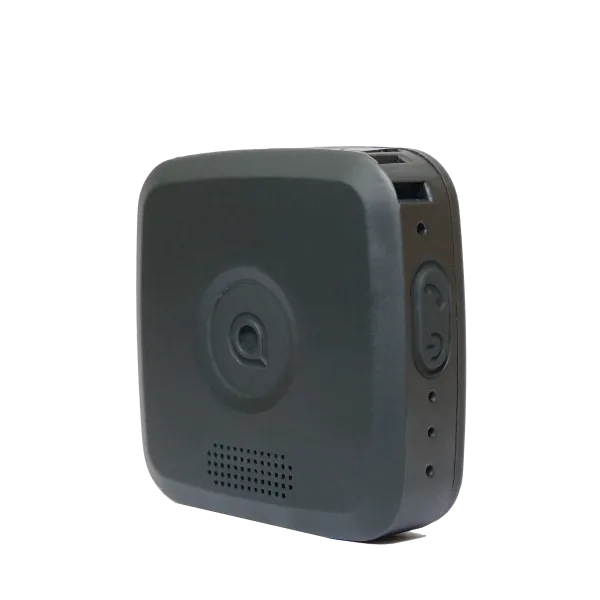15 Personal Safety Tips for Lone Workers, Remote Employees & Office Teams
In this guide, we share expert-backed personal safety tips and explore how lone worker safety devices, mobile safety apps, and risk assessments can help prevent incidents and support your wellbeing at work.
.webp)
Workplace Personal Safety Tips for Lone, Remote, and On-Site Workers
In today’s evolving workplaces, personal safety is a top concern — especially for lone workers, remote employees, mobile teams, and on-site staff. Whether you work in healthcare, construction, retail, or the public sector, it’s vital to stay safe, prepared, and supported.
In this guide, we share 15 essential personal safety tips, explain why lone worker safety technology matters, and give you access to our free downloadable Lone Worker Safety Tips fact sheet to share with your teams.
What Does Personal Safety at Work Really Mean?
Personal safety has been defined by Suzy Lamplugh Trust as: "An individual’s ability to go about their everyday life free from the threat or fear of psychological, emotional or physical harm from others."
But, in a practical sense, it's an awareness (and proactive avoidance) of situations or people that could cause you harm.
Lone Worker Safety: Why It Matters More Than Ever
- 642,000 incidents of workplace violence were reported in 2023/24 — including 290,000 assaults and 352,000 threats
- 35% of these violence incidents resulted in injury (mainly bruises, cuts, sprains), while the remaining 65% were non‑injurious
- 132% increase in physical attacks on lone workers over the past three years, as identified by SoloProtect's 2024 Impact Report
- HSE estimates that 8 million UK workers are lone workers — roughly 1 in 4 employees
Personal Safety Tips for Lone, Remote & Office-Based Workers
Behavioural Safety Tips for Lone Workers
1. Trust your instincts
Remember your dynamic risk assessments and trust your instincts. If you feel uneasy about entering a building or carrying out a specific task, there’s probably a valid reason why. Either remove yourself from the situation or ensure you have personal safety support available should something happen.
2. Watch and listen
It’s important to always be aware of what’s going on around you. Try to avoid wearing headphones or walking along while looking at your phone. If you identify a potential risk early, you can take steps to avoid it.
3. Stay alert when meeting people alone
If you’re meeting someone alone, particularly if you haven’t met them before or they’re known to be high-risk, make sure someone knows where you are and place yourself between them and the door. This will give you an easier exit route if you need it.
4. Be theft aware
Try to avoid carrying valuables with you. If you do need to carry valuables, make sure they’re stored out of sight and if someone tries to grab your bag or your mobile phone, just let it go. Your personal safety is more important.
5. Slow down!
We all rush to get things done which can result in an increased risk of slips, trips, falls, car accidents or substandard dynamic risk assessments. Slow down and contact a colleague if you’re struggling.
Travel Safety Tips for Remote and Lone Workers
1. Have a plan
If you’re travelling between locations, make sure you’ve planned your route and think about any potential risks. You should also make sure you’re fully aware of your organisation’s health and safety policies and procedures they’re there to keep you safe.
2. Use well-lit routes
If you’re walking or cycling, stick to well-lit, popular routes even if they take longer and make sure you have appropriate reflective clothing for when it's dark.
3. Stay near to others
When travelling by public transport, it can sometimes be tempting to sit in the quietest spot. Sit in a place where there are other people around and know where the exits are.
4. Park wisely
Always try to park in a well-lit, accessible area, have your keys to hand when returning to your car and lock your car doors once inside.
5. Know where you are
Download an app such as what3words to your phone to ensure you can always pinpoint and communicate your exact location.
You can find more personal safety tips for travelling in our article: Tips for a safe, stress-free commute.
General Workplace Safety Tips for All Employees
1. Communicate
Make sure a colleague or family member knows what time you’re expected at work and what time you’re due home so they can raise an emergency alarm if you don’t turn up.
2. Be prepared
Ensure you are appropriately prepared for unpredictable weather conditions e.g. carry a torch when it’s dark, wear warm clothing in winter. Why not take a look at our article: Staying Safe When Working Alone at Night: Tips and Legal Responsibilities
3. Use a lone worker device or safety app
Use a SoloProtect lone worker device or personal safety application to ensure you can quickly call for help in an emergency. Our lone worker app and wearable devices let you raise a discreet alarm, access 24/7 monitoring, and share your location in real-time.
4. Display ICE details
Save In Case of Emergency contact details to your phone under "ICE". You could also display ICE details on your lock screen. This is particularly helpful for home workers, field staff, and anyone working without direct supervision.
5. Report incidents
Report any incidents to the police using 101 or use 999 for emergencies.
How Lone Worker Devices and Safety Apps Can Keep You Safe
Using a lone worker device or personal safety app is one of the most effective ways to protect yourself while working alone, remotely, or in high-risk environments. These tools provide a discreet, reliable way to call for help when a situation becomes unsafe.
SoloProtect’s range of lone worker safety devices includes features such as the Red Alert panic button, Man Down detection, and real-time GPS tracking. When activated, these features connect you to a 24/7 Monitoring Centre, where trained operators assess the situation and coordinate an emergency response — bypassing 999 queues to reach the relevant authorities faster.
A lone worker safety app, like the SoloProtect Mobile App, offers the same functionality via your smartphone, making it ideal for flexible workforces or those using BYOD (bring your own device) policies. These solutions empower workers to feel safer, respond faster in emergencies, and stay connected no matter where their job takes them.
Risk Assessments: A Key Part of Your Safety Strategy
Preventing workplace incidents starts with identifying and mitigating potential risks. A thorough lone worker risk assessment should evaluate job roles, environments, and the likelihood of harm, considering factors like working in isolation, exposure to the public, or dangerous equipment.
Once risks are identified, control measures should be implemented — and that’s where technology plays a key role. Equipping your team with lone worker alarms, dynamic risk assessment tools, and real-time communication apps ensures employees can recognise evolving hazards and respond proactively.
For example, SoloProtect’s Check-In feature allows users to record their location and planned activity, which supports dynamic risk assessments throughout the day. Combined with incident reporting and escalation protocols, this helps employers meet their duty of care while empowering staff to work with confidence.
Investing in safety technology doesn’t just reduce accidents — it enhances wellbeing, increases retention, and strengthens your organisation’s safety culture.

Download the Lone Worker Safety Tips Fact Sheet
You can also access Safety Tips for Lone Workers as a downloadable fact sheet. Just fill in the details below to access it.
Book a free demo, request a quote, or get answers to your questions:
- Book a Lone Worker Safety Demo →
- Get a No-obligation Quote →
- Contact Us →
- Call us: 0114 399 6000
Your message has been received and we will be in touch shortly.










.webp)
.webp)









